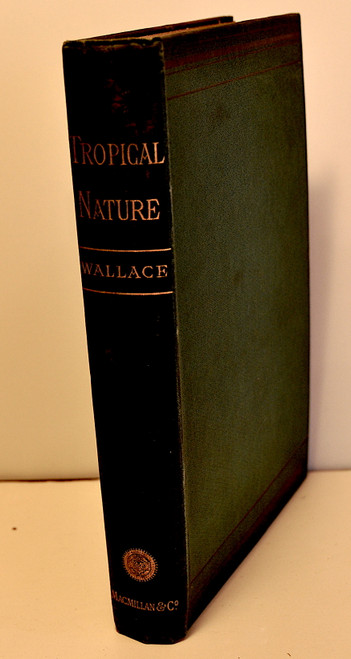Lockyer, J. Norman; The Meteoritic Hypothesis. A Statement of the Results of a Spectroscopic Inquiry into the Origin of Cosmical Systems. London: Macmillan, 1890. Large octavo, pp. xvi, 560, half title, 7 plates, 101 figs., index.
The work is complete and in the original brown cloth with gilt-stamped titles, brown end sheets. Light scuffing to boards, light toning to half title. Text is clean and bright, owner’s penned signature on half title with 1890 date. The work is rare in this condition.
Sir Joseph Norman Lockyer (1836-1920) was an English scientist and astronomer. Along with the French scientist Pierre Janssen, he is credited with discovering helium. Lockyer had an early interest in astronomy and in particular the sun, meteor showers and comets. In 1869 Lockyer founded the journal "Nature", to this day one of the leading general scientific Journals. He edited that Journal for 50 years.
Lockyer is among the pioneers of archaeoastronomy. In 1890 Lockyer became interested in possible astronomical alignments of ancient Greek and Egyptian monuments and temples, and in 1901 he extended his studies to Stonehenge. Once approximate alignment of a given monument had been identified, he had the interesting idea to date the monument by assuming exact alignment at time of construction and interpreting the difference in terms of the precession of the Earth's orbital axis. His derived age of 1848 BC for the construction of Stonehenge was confirmed much later, in 1952, by radiocarbon dating.
Over the years he gradually developed his 'meteoritic hypothesis', in which swarms of meteoritic particles and their collisions were responsible for such diverse phenomena as comets and nebulae of various kinds. In common with many others, he saw the discovery of the spiral nature of the Andromeda nebula as confirmation of Laplace's theory of the origin of the solar system. Lockyer argued that the meteoritic material would flow along the arms into the nucleus. His interest in spectra and in the origin and evolution of stars led him to study the classification of stars by their spectra. Lockyer was a pioneer of the idea of a double-branched temperature sequence; there was an ascending branch during the initial condensation when the color changed from red to white, by which time all the meteorites had been vaporized, and then a descending branch during further condensation when the color changed back to red. He published his ideas in his book, The Meteoritic Hypothesis.













